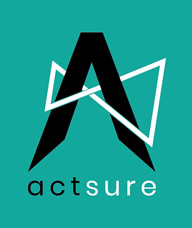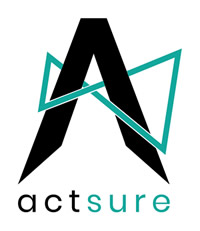Actuarial Solutions
Actuarial Valuations & Reserving – Life and Non-Life
Background: Regulated insurers are required to keep offsetting assets to pay off their future liability. Since these liabilities are mostly in the future, it is important that they are determined using actuarial methods. These liabilities most times represent a huge size on an insurers’ balance sheet. Therefore, proper care must be taken to ensure their accuracy, appropriateness and timeliness to meet regulatory deadlines.
How we can help:
- Timely determination of reserves based on sound actuarial methodology and assumptions that are in line with regulatory and reporting standards
- Determination of Solvency Position
- Determination of profits/surplus of the company
- Annual, quarterly, and monthly Regulatory reporting support
- Appointed Actuary service
Insurance Product Development and Pricing
Background: Life insurance pricing is very critical since the company must set premiums for longer terms in advance without knowing when exactly the benefits will be paid out. Therefore, it is vital that the insurer test viability of the pricing from time to time with ever changing demographic and economic variabilities to ascertain the likely profitability.
How we can help:
- Product concept Design (Market Research/ Viability Checks)
- Designing Features
- Reinsurance solutions
- IFRS 17 compatibility
- Pricing and Profitability
- Pricing certificate issuance
- Market Comparison, Competition and compatibility’s
- Regulatory submissions
- Policy Document Preparation
- Product Manual
- Review in marketing materials
- System Specifications and requirement (System development support)
- Product training to for sales
- Assets Liability Management
- Sales Management Support
- After Sales Product Review
Portfolio/Product Profitability Analysis
Background: Regular reviewing of profitability is one of the main tasks of a life insurer looking to navigate market competition and validate their products’ pricing.
How we can help:
- Perform profitability study using the latest experience assumptions
- Profit Projections
- Insight into which products are suitable in the current market, which need to be withdrawn or relaunched
Life Insurance Profits Projection
Background: Profit projections provide insurance companies with a valuable tool for financial planning, risk assessment, capital management, investment decisions, business strategy, and stakeholder communication. They enable insurers to anticipate future profitability, identify potential risks and opportunities, and make informed decisions to ensure their long-term success and sustainability.
How we can help:
- Analyze experience trends and setup future assumptions
- Cashflow projection
- Monitoring and variance analysis
Embedded Value/Value of New Business Calculations
Background: Embedded Value (EV) is a financial metric used primarily in the insurance industry to evaluate the current value of an insurance company or its specific business segments. It is a method of valuing an insurance company based on its future projected cash flows and expenses. The Value of New Business (VoNB) is a financial metric used in the insurance industry to measure the value of new business written by an insurance company during a specific period. It represents the present value of expected future profits from the new policies issued in that period. Both these metrices are frequently used to value the insurance business.
How we can help:
- Determine assumptions for existing business and point of sale assumptions for new business
- Support the company to manage future expense overruns if any
- Cashflow projections and computation of values
- Result analysis
Business Planning
Background: Business planning is essential for insurance companies to navigate a dynamic and highly regulated industry successfully. It provides a roadmap for strategic decision-making, risk management, resource allocation, product development, financial management, and stakeholder engagement. By developing a robust business plan, insurance companies can enhance their competitiveness, drive growth, and adapt to the evolving needs of customers and the market.
How we can help:
- Insights to estimate the future sales volumes with suitable product mix
- Cashflow projection including future sales
- Profits, EV and solvency projection
- VoNB projection
- Results analysis
- Sensitivity and scenario testing
Experience Analysis
Background: Experience analysis is a critical process which allows insurance companies to continuously monitor the performance of their products and make informed decisions to maintain financial stability and provide competitive offerings to policyholders. It also helps actuaries improve their models and assumptions for future pricing and reserving activities.
How we can help:
- Analyze the data, perform data checks and validations
- Design experience studies for required areas such as mortality, lapse, morbidity, loss ratio, etc.
- Profitability assessment
- Assumption review
- Regulatory compliance for RBC annual returns
IFRS17 Implementation Support – Life and Non-Life
Background: IFRS-17 significantly impacts the way financial information is presented. This has significant business impacts. It changes how profits for insurers materialize. The profit patterns will now be different under IFRS-17. There is added complexity to the valuation process, data requirements, assumption setting, and analyzing and communicating results. Therefore, adopting IFRS-17 requires crucial planning. IFRS 17 will come into effect from 2025 onwards.
How we can help:
- IFRS17 GAP Analysis
- Implementation support including project management
- Technical support after implementation
- Back-end/co-consulting support
Audit support - Actuarial Valuation and solvency - Life and non-life
Background: It is a requirement of an Audit firm who is the external auditor of an insurance company to audit the actuarial workings which is a main part of insurance company financials. An actuarial audit will make sure that internal or external actuarial calculations of Actuarial Valuations and Solvency, have been done according to the prescribed guidelines, using proper actuarial assumptions and methodologies. Actuarial audit make sure that adequate reserves have been kept in the insurance company’s balance sheet.
How we can help:
- Check proper and correct guidelines for actuarial valuation is followed
- Check the valid and reasonable assumptions have been used
- Check for the methodologies used in the calculations
- Check whether the methods on Actuarial assumptions calculations are in order
- Audit on adequacy of the data validation process
Reinsurance Strategy Optimization
Background: Reinsurance plays a vital role in life insurance. Insurers make use of reinsurance to spread risks. If the level of risk passed onto reinsurers is not properly understood and more risk is passed on to the reinsurers than necessary (or vice versa), profit may be left on the table. Therefore, optimizing reinsurance is crucial to achieve the right balance between profit and risk.
How we can help:
- Calculate the optimum retention level based on current portfolio
- Compatibility with Solvency under the new retention level
- Reinsurance premium projection with new and old retention level
- Impact to the profitability under new retention level
Actuarial Support for New Insurance Business Licensing Process
Background: Obtaining a new license to start an insurance business in Sri Lanka is a tedious process specially with the documentation and regulatory requirements. One key requirement of the regulator is to produce a 3-year business plan.
How we can help:
- Identify potential products and pricing
- Expense projection
- Sales projection
- Profit projection and analysing the expected breakeven point
- Scenario analysis
Actuarial Modelling
Background: Actuarial models are crucial in terms of projecting the results in all actuarial calculations. Therefore, model development should be carried out with utmost consideration along with necessary controls and governance in place.
How we can help:
- Model development using Prophet, Excel, R etc.
- Peer review of existing models
- Develop model controls and governance
- Model efficiency enhancement
Actuarial Secondments
Background: Actuarial secondments benefit the companies from having access to specialized actuarial knowledge and experience to address their unique challenges and opportunities.
How we can help:
- Assign team members to work with the client on full-time basis
- Setup Actuarial processes and structures
- Capacity building
Actuarial Co-consultation
Background: Co-consultations promote a collaborative approach to problem-solving, which can lead to more effective outcomes for the individuals involved. It will also reduce the burden of the main consultant and allow the consultant to obtain more specialized resources for a reasonable cost.
How we can help:
- Assign team members to work with the client on full-time basis
- Complete sub-projects from the main project of the consultant
- Work with the main consultant collaboratively on finalizing the project within the given timeline
Data Science
Background: Integrating data science into actuarial practices enhances accuracy, efficiency, and strategic decision-making in the insurance and financial sectors, ultimately leading to better risk management and financial stability.
How we can help:
- Use of predictive modelling and statistical techniques to assess and manage risks in financial institutions
- Use of data science techniques in developing pricing models by analyzing customer data, market trends and other relevant variables
- Use of data science to segment policyholders and other customers based on their behaviours, preferences and risk profiles and design tailored products and marketing strategies to target specific customer segments effectively
- Various other data science techniques
Gratuity & Pension Benefits
Background: Valuation of defined benefits obligations allow companies to identify the amount of their expected liabilities, and the timing of these obligations. It enables the identification of the assets that can be utilized to meet the expected obligations.
Additionally, calculation of Gratuity and Pension provision is an accounting regulatory requirement under IAS-19.
How we can help:
- Calculate the gratuity and pension provision
- Advise on the provision to be made at the annual financials
- Advise with current service cost and the past service cost
- Review of gratuity and pension reserve for auditors


